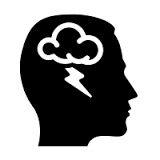Main Content
Lesson 4: Globalization and the Impact on Communication & Knowledge Sharing
Global Connectedness and the Global Brain (with Journal Entry L4-2)
The technologies and mindset underlying the flourishing global business and engineering environment present tremendous opportunities and challenges alike.
“The Global Brain is a metaphor for this emerging, collectively intelligent network that is formed by the people of this planet together with the computers, knowledge bases, and communication links that connect them”
—Mayer-Kress and Barczys, 1995
Heylighen describes this network as a self-organizing complex system (Heylighen 2007). The “global brain” can process information, make decisions, solve problems, learn new connections, and discover new ideas. Control of the system is not in the hands of an individual, organization or machine and its knowledge and intelligence are distributed across the globe over all its components (Heylighen 2007).
A common, current example is the Internet. Such “brains” form from the aggregated interactions among all the human and machine sub-components. Idem suggests that a system such as this might be able to solve current and emerging global problems that traditional approaches have yet to solve (Idem, 2004). While optimism exists in the potential to solve problems, there are also concerns that this network will also lead to new technological and social challenges that we haven't thought about (Heylighen, 2011).
In contemporary society people are connected by the flow of data and information. Various representations are available that show the topology of global networks and traffic over the internet. Figure 4.6 includes a map of Facebook, Figure 4.7 how the world reacted to the 2020 Tokyo Olympics Announcement on Twitter, and Figure 4.8: a map of Twitter’s languages.
The interconnectedness of the world is mind expanding.
Figure 4.9 is a screen capture of the statistics related to Internet usage at the time the commentary content was originally written on July 20, 2016. This is provided so that you can go to the website and compare current statistics to those from July 20, 2016 to see how much has changed. The statistics presented in Figure 4.9 are:
- Internet users in the world: 3,416,730,454
- Total number of websites: 1,055,635,584
- Emails sent: 161,619,465,990
- Google searches: 3,429,143,979
- Blog posts written: 3,186,526
- Tweets sent: 451,240,462
Check out the real-time current statistics related to Internet usage to compare with Figure 4.9. How much has it changed?
Check out these interactive maps related to telecommunication. There are several different maps; try a few.
The enormity of this interactive nature is exciting. To consider that this tremendous interconnectivity has emerged in the 20 years since the start of widespread use of the Internet, the next 20 years promise even greater opportunities and challenges.
 Stop, Think, and Reflect: Journal Entry L4-2
Stop, Think, and Reflect: Journal Entry L4-2
- What do you think the future will look like?
- What opportunities and challenges do you think will arise as interconnectivity and the global brain evolve over the next 10 years?
Before you move on, reflect on your answers to these questions. Then write your answers or reactions and submit them in the text box of the Journal Entry L4-2 assignment page before you move on to the rest of the course content.
